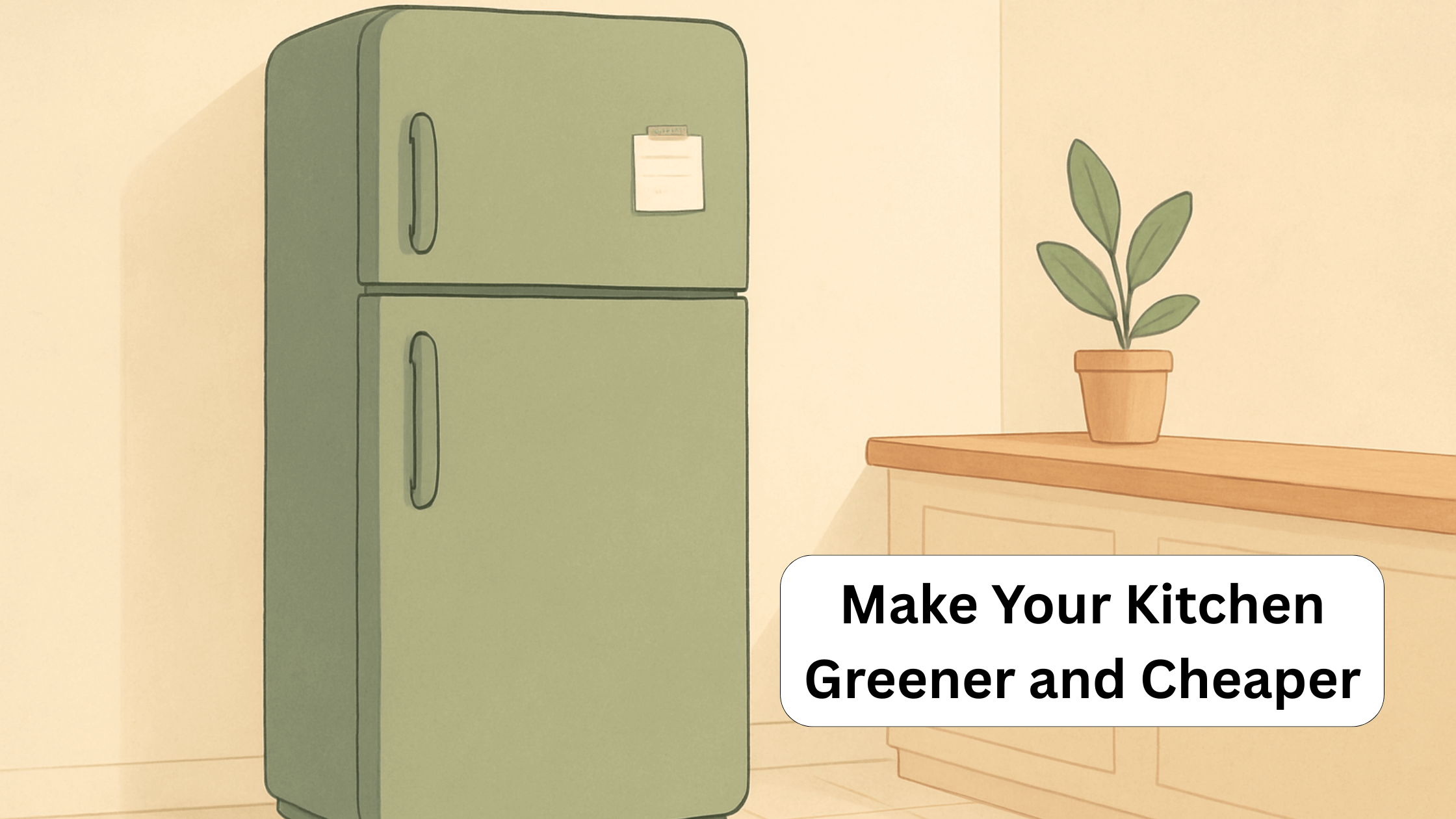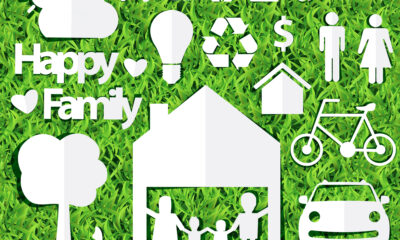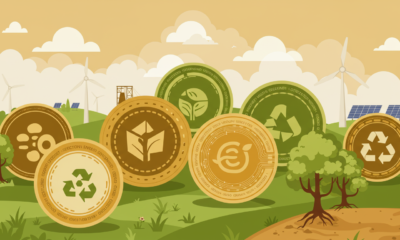

Features
Make Your Kitchen Greener and Cheaper
The kitchen is often the heart of the home, but it can also be a significant source of waste and energy consumption. Transitioning to a “greener” kitchen isn’t just about switching out cleaning supplies; it’s about fundamentally changing how we store, consume, and manage food—a shift that directly translates into lower utility bills. The key to this transformation lies in harnessing technology to combat one of the biggest ecological and financial drains: food waste.
This is where the often-overlooked smart refrigerator proves its worth, evolving from a simple appliance to a powerful food management hub. By tracking inventory, alerting you to expiring items, and even suggesting recipes based on ingredients nearing their “use-by” date, a smart fridge directly addresses the consumer habits that lead to premature spoilage. When you waste less food, you are not only saving money but also dramatically reducing your personal contribution to landfill methane emissions, making smart technology a crucial ally in the pursuit of a greener and cheaper kitchen.
Why Your Fridge Matters
Your fridge runs all day. Your fridge runs all night. The quiet hum never stops. Small mistakes repeat every minute. Small improvements repeat too. Tiny changes stack up fast and turn into real savings. Your bill goes down. Your impact on the planet goes down too.
You do not need fancy gear. You do not need complicated tools. You only need a little attention and a simple routine. A few smart choices make your kitchen greener and your costs lower.
What a “Smart” Fridge Really Does
A smart fridge is more than a screen. The value sits in the controls. Sensors keep an eye on temperatures. The system adjusts cooling to match what is inside. The target is steady cooling with less effort.
Many models send a ping when a door stays open. Many models remind you to replace a filter. Some models help you track what you store so food does not hide in the back and go bad. Use more, waste less. Your bin stays lighter, and so does the methane coming from landfills.
The main win is smoother control. Smarter cooling reduces hard compressor starts and reduces overcorrections. Your food stays safe. Your energy use drops. Your budget benefits over time.
These systems can save you hundreds each year. This is how smart refrigerator technology benefits your home and lowers your environmental footprint.
The Compressor: The Part to Watch
The compressor is the core that drives the fridge. The loop moves refrigerant. The refrigerant grabs the heat inside and takes it outside. The compressor pushes that loop. A healthy compressor keeps the fridge quiet and efficient. A struggling compressor uses more energy.
You can protect it with easy steps. Give the cabinet space on every side so air can move. Two inches is a good start. Give the condenser coils a quick clean every six months. Dust holds in heat and forces the compressor to keep working. Clean coils let the compressor rest.
Listen for changes. Constant running can point to a problem. Clicking or rattling can point to a weak start relay or a loose mount.
Small problems grow if you ignore them. Early action prevents bigger breakdowns. You can learn how to check the compressor safely, or just call in a professional for a quick checkup. A healthy compressor means years of efficient cooling ahead.
Buying Your First Fridge, the Eco Way
A first refrigerator is a big step. The choice will shape your home for many years. Use an efficiency mindset from the start.
Pick the right size. An oversized fridge cools empty space and wastes energy. A very small unit can run at its limit and still waste energy. Match the volume to your household and your shopping rhythm.
Read the energy label. Efficient models cut consumption compared to older designs. The sticker price may be higher. The lifetime cost is usually lower. The difference shows up on your utility bill month after month.
Choose only features that you will use. Automatic ice and door screens look great in a showroom. These features add standby loads and add parts that can fail. Simple designs often last longer and use less power. You buy once and use it for years. You keep costs low. You keep emissions low.
First-time home buyers have a lot to consider. The plan goes beyond the fridge. Helpful resources balance budget, lifestyle, and environmental values. Every purchase has ripple effects.
Every purchase we make has ripple effects. Fridges require tons of resources to manufacture. Choosing an efficient model that lasts reduces your environmental impact in ways that compound over time.
Daily Habits That Save
You can start saving energy today. These habits take minutes and keep paying you back.
- Correct temperatures. Fridge 3°C, freezer -18°C. Lower than that is extra power, not extra protection.
- Check the door seals. Try the bill test: close a note in the door and tug. If it slides out easily, clean the gasket or plan a replacement.
- Clean the coils. Vacuum the coils twice a year so heat can get out. They shed heat better and the compressor works easier.
- Keep shelves neat and bins sorted. Leave small gaps to let air move.
- Cool leftovers first. Let hot dishes cool to warm before you store them. That prevents a heat spike inside the fridge.
When Things Break: Repair First
Many people think replacement is the only option when a fridge acts up. In many cases a repair is the smarter choice. Repairs to fridges often fix the exact fault for less money and far less environmental cost than buying new.
A targeted fridge repair can add years of service life. Common issues like a start relay, a fan motor, a thermostat, or a small sealed system fault are fixable. A professional refrigerator repair service handles refrigerants safely and follows proper recovery rules. That protects the climate because poor handling can release gases with very high global warming potential.
Repair keeps good materials in use. It takes a lot of energy to make these materials. When you swap an appliance, factories start over. Repairing what you have helps the circular economy. It cuts emissions.
Repairs usually beat the price of new. Fridges under 10 years often make sense to fix. A cabinet and doors in good shape are a good sign. A repair will likely save you money. An old fridge often wastes power. That fridge is better to replace. A certified program should recycle the old fridge.
The Bigger Picture
You save a kilowatt-hour. The grid sees lower demand. Lower demand reduces peak power. Fewer peaks cut emissions. Cleaner air follows. You keep meals out of the bin. Landfills make less methane. You keep an appliance one more year. Factories avoid building a new one. Emissions drop. Your kitchen choices affect all these systems.
Sustainable living grows from practical steps. You learn how your fridge works. You build small habits. You choose repair when it is sensible. You buy efficient gear when the time is right. You measure progress by lower bills and longer product life. The planet benefits right alongside your home.


 Environment9 months ago
Environment9 months agoAre Polymer Banknotes: an Eco-Friendly Trend or a Groundswell?

 Environment11 months ago
Environment11 months agoEco-Friendly Home Improvements: Top 7 Upgrades for 2025

 Features8 months ago
Features8 months agoEco-Friendly Cryptocurrencies: Sustainable Investment Choices

 Features9 months ago
Features9 months agoEco-Friendly Crypto Traders Must Find the Right Exchange



















